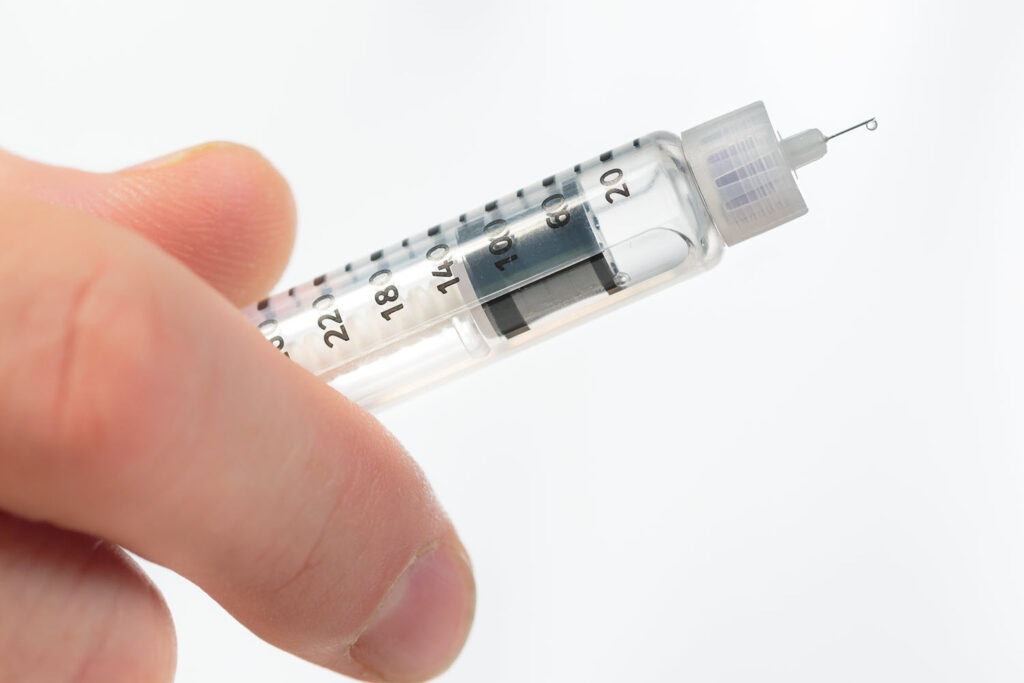Published by Dr. Brandon Richland, MD

Losing weight can have many positive benefits, but it might come with a less talked about side effect known as “Ozempic face.” This term refers to the facial changes some people experience when using Ozempic, a medication often used for weight loss. Facial volume loss, sagging skin, and the appearance of wrinkles are common changes associated with rapid weight loss. Fortunately, there are both non-surgical and surgical treatments to help restore facial fullness and a youthful appearance.
Non-surgical solutions can include treatments like Ultherapy and dermal fillers, which enhance the skin’s elasticity and volume without the need for surgery. These treatments focus on tightening the skin and filling in areas where volume has been lost. On the other hand, some may choose surgical options, such as a facelift, to more dramatically alter their features and achieve desired results.
Key Takeaways of How to Fix Ozempic Face
- Ozempic face results from rapid weight loss causing facial volume loss.
- Non-surgical and surgical treatments are available to restore skin appearance.
- Lifestyle changes can enhance treatment results and maintain skin health.
What is Ozempic?
Ozempic is a medication containing semaglutide, commonly prescribed to manage type 2 diabetes and aid in weight loss. Semaglutide works by mimicking a hormone that helps regulate blood sugar and appetite. This often leads to rapid weight loss, which is beneficial for overall health but can bring unexpected changes to one’s appearance.
Similar products, like Wegovy and tirzepatide, serve comparable purposes. Despite its benefits, one major issue with Ozempic is its impact on facial features. This treatment sometimes results in a thinner, more aged look due to the rapid loss of weight and facial fat.

Impact of Weight Loss on Facial Volume
Rapid weight loss, while beneficial for health, can lead to facial volume loss. This often results in a gaunt or hollow appearance, sometimes described as looking older.
Facial fat helps maintain a youthful look by keeping skin plump and smooth. When this fat is lost quickly, it may cause sagging skin and more noticeable fine lines. For individuals using Ozempic, this change is sometimes unexpected and can be distressing.
Understanding these changes can help users prepare and consider potential treatments, both non-surgical and surgical, to address these cosmetic concerns.
Non-Surgical Solutions to Address Ozempic Face
For those experiencing changes in facial appearance due to weight loss medications, non-surgical treatments offer effective solutions. These techniques include dermal fillers for volume restoration, collagen enhancement methods, and advanced skin tightening options.
Dermal Fillers for Volume Restoration
Dermal fillers help in restoring the volume lost from procedures or medications like Ozempic. They are especially useful for filling in areas where sagging skin has become apparent.
Products like Juvéderm and Restylane are popular choices. They often contain hyaluronic acid, which naturally plumps the skin, smoothing out fine lines and wrinkles.
By strategically injecting these fillers, practitioners can create a more youthful appearance, without over-filling or leading to unnatural results. Radiesse, another option, is known for encouraging collagen growth, further enhancing skin texture over time.
Boosting Collagen Production
Increasing collagen levels is crucial for firm and elastic skin. Ultherapy is a notable method utilizing ultrasound technology to boost collagen and elastin production.
This treatment involves using ultrasound energy to penetrate deep skin layers, initiating a natural lift and sculpting effect. Unlike traditional facelifts, Ultherapy is non-invasive, requiring minimal recovery time. The production of collagen gets stimulated, helping the skin to regain its firmness and elasticity.
Skin Tightening Treatments
Non-surgical skin tightening treatments are another excellent option for addressing sagging skin associated with Ozempic face. These treatments, including nitrogen plasma technology and laser therapies, aim to tighten and smoothen the skin’s surface.
They also promote collagen and elastin formation, providing long-lasting results. Many of these treatments require little to no downtime, making them a convenient choice for individuals seeking efficient solutions with visible improvements over time.
Surgical Methods to Restore Facial Structure
Surgical methods can help restore facial structure affected by weight loss, especially from medication like Ozempic. Key approaches include facelift surgery to reshape facial contours, fat transfer to add volume, and advanced techniques for rejuvenation.
Facelift Surgery for Long-term Contouring
A facelift is an effective way to address issues like excess skin and sagging caused by weight loss. This procedure tightens the skin and underlying tissues, improving facial contours. It also helps to smooth out wrinkles and provides more youthful features.
Performed by a board-certified plastic surgeon, a facelift procedure lifts and reshapes the facial structure. The surgeon makes incisions in targeted areas, usually hidden in the hairline or natural skin folds. This minimizes visible scarring while allowing for extensive reshaping.
Healing typically takes several weeks. The results last for many years, offering a long-term solution for maintaining facial structure after significant weight change.
Fat Transfer Procedures
Fat transfer, also known as fat grafting, involves taking fat from other body areas and injecting it into specific parts of the face. Common donor sites include the abdomen or thighs. This method helps in restoring facial volume lost due to rapid weight loss.
The procedure begins with liposuction, which extracts fat. Then, the surgeon purifies the fat cells and injects them into the target facial areas. This boosts volume in areas like the cheeks and jawline, creating a balanced and fuller look.
Candidates typically experience minimal discomfort. Recovery time is relatively short, and with proper care, the effects can be long-lasting. They regain a youthful appearance while using their body’s natural resources.
Advanced Facial Rejuvenation Techniques
Advanced techniques may incorporate newer technologies, such as laser-assisted procedures, to enhance skin texture and tone. While these may not replace traditional surgeries, they complement other methods by smoothing finer lines and improving overall skin quality.
Some options involve using fillers like Sculptra to stimulate collagen production. This enhances facial contour and reduces fine lines, offering a non-invasive way to improve facial structure.
These techniques are often tailored to the individual’s needs, accounting for factors like genetics and age. They provide targeted enhancements, leading to a refreshed appearance without extensive downtime.

Lifestyle Adjustments to Enhance Skin Elasticity and Volume
Improving skin elasticity and volume involves addressing diet, exercise, and skincare. Each plays a crucial role in maintaining a healthy, youthful appearance. Simple changes can make a big difference in combating loose skin and enhancing collagen production, resulting in firmer skin.
Dietary Considerations for Skin Health
Nutrition greatly impacts skin elasticity and volume. Consuming foods rich in Omega-3 fatty acids, such as salmon and walnuts, supports skin health. Antioxidants like those found in berries and dark leafy greens protect against damage and encourage collagen production.
Staying hydrated is vital. Water maintains skin moisture and elasticity, reducing the look of sagging. Include Vitamin E and zinc in the diet through foods like almonds and chickpeas to support skin structure.
Exercise and Muscle Tone
Exercise helps firm up the skin by enhancing muscle tone. Activities such as facial exercises specifically target muscles in the face. These simple drills can add volume and lift, diminishing signs of sagging.
Full-body workouts, like yoga or Pilates, improve circulation and boost collagen production. This enhances skin strength and resilience. Regular physical activity is key to gaining a toned appearance and preventing loose skin.
Skincare Regimen for a Youthful Appearance
An effective skincare routine plays an important role in maintaining skin elasticity. Products containing retinoids stimulate collagen production, improving firmness over time. Daily sun protection is crucial. Sunscreen prevents ultraviolet damage that accelerates aging.
Integrating moisturizers with hyaluronic acid helps keep skin plump and hydrated. This ingredient is known for its ability to retain moisture, enhancing skin volume and smoothness. Adopting a consistent routine can sustain healthy-looking skin.
Frequently Asked Questions about How to Fix Ozempic Face
1. What Are Non-Surgical Methods To Improve The Appearance Of Ozempic-Induced Facial Changes?
Non-surgical options include soft tissue fillers that restore lost volume. Energy-based treatments like radiofrequency microneedling and Ultherapy help by stimulating collagen and tightening the skin. These methods can improve facial appearance without going through surgery.
2. Can Facial Exercises Help Tighten Skin Affected By Ozempic?
Facial exercises can tone muscles but might not significantly tighten loose skin. They’re an easy option to add to a daily routine, promoting blood flow. While they can complement other treatments, exercises alone are often not enough to fully address the changes.
3. What Are The Surgical Options Available To Address Changes In Facial Contour After Using Ozempic?
Surgical options for addressing facial contour changes due to a significant weight loss, include facelifts, neck lifts, and fat grafting. These procedures can help reshape the face and restore balance. Consulting with a cosmetic surgeon can provide tailored advice based on individual needs.
4. How Can I Prevent Alterations In My Facial Features While Taking Ozempic?
Maintaining a balanced diet and regular exercise can help manage weight loss healthily. Cosmetic interventions like fillers can also be considered to support facial fullness. It’s important to discuss plans with healthcare providers to support skin health during treatment.

Conclusion and Summary of How to Fix Ozempic Face: Non-Surgical & Surgical Treatments That Work
While using a weight loss drug like Ozempic can trigger rapid changes, including unwanted fat loss and notable facial fat loss, it is important to approach these challenges with a balanced strategy. Managing body weight effectively involves not only achieving gradual weight loss but also safeguarding the quality of your facial skin. For some, this might mean opting for non-invasive treatments to restore volume and texture, while others may consider plastic surgery for more pronounced rejuvenation.
Moreover, maintaining stable blood sugar levels can contribute to overall skin health, ensuring that the effects of fat loss do not overly impact your appearance. Ultimately, whether you pursue subtle interventions or more comprehensive surgical options, a personalized plan tailored to your needs is essential for preserving a youthful look and long-term well-being.
Please note that this article is intended for informational purposes only and should not be construed as medical advice. Before making any changes to your treatments, please consult with your healthcare provider to discuss the appropriateness and safety of such changes.
Ready For Your First-Class Cosmetic Experience in Orange County (OC) California (CA)?
Are you located in one of these Orange County (OC) / Southern California cities?
Aliso Viejo, Anaheim, Brea, Buena Park, Costa Mesa, Coto de Caza, Cypress, Dana Point, Fountain Valley, Fullerton, Garden Grove, Huntington Beach, Irvine, La Habra, La Palma, Laguna Beach, Laguna Hills, Laguna Niguel, Laguna Woods, Ladera Ranch, Lake Forest, Los Alamitos, Mission Viejo, Newport Beach, Orange, Placentia, Rancho Santa Margarita, San Clemente, San Juan Capistrano, Santa Ana, Seal Beach, Stanton, Tustin, Villa Park, Westminster, or Yorba Linda?
Plastic Surgeon Dr. Brandon Richland, MD and our Cosmetic Aesthetics Team are ready to help you look and feel your absolute best.
Elevate your confidence and self esteem levels to unfathomable new heights!
Schedule your in-person consultation in our modern and luxurious offices in either Fountain Valley, CA (Main HQ) or our Newport Beach, CA office.
Do you live outside of Southern California or short on time? For your convenience, Virtual Consultations are also available.
Our warm and engaging Team of carefully selected Aesthetics Professionals will make you feel calm, cool, collected, and right at home throughout your entire consultation and surgery process.
Schedule Your Aesthetics Consultation here, or call us directly at 949-867-4496 today.
About the Author

Dr. Brandon Richland, MD is a respected Board Certified Licensed Plastic Surgeon in Orange County / Southern California specializing in cosmetic and reconstructive surgeries.
Driven by his passion for medicine, Dr. Richland obtained his Doctor of Medicine (M.D.) degree from the prestigious program at Saint Louis University (SLU) School of Medicine in 2013. His exceptional skills were recognized when he received the McGraw Hill / Lange Medical Student Academic Achievement Award, and graduated top of his class with Honors. For his undergraduate degree, he attended University of California, Los Angeles (UCLA) and graduated with Honors in 2009.
To further enhance his surgical expertise, Dr. Richland completed his Residency in Plastic Surgery at the University of California, Irvine (UCI) from 2013 to 2019 earning the Academic Achievement Award twice during this period. A total of 14 years in dedicated schooling and medical residency.
Dr. Richland is actively involved with healthcare and medical societies, as a Diplomate of the American Board of Plastic Surgery, a member of the American Society of Plastic Surgeons, American Society of Aesthetic Plastic Surgeons, and the California Society of Plastic Surgeons.
Contact Dr. Richland today by visiting RichlandMD.com, scheduling a cosmetic consultation, or by calling 949-867-4496 directly.
Cover Image Credit: Etonastenka / 123RF.com (Licensed). Photo Illustration by: Dr. Brandon Richland, MD.










